Toni Kroos is back in the Germany squad ahead of their hosting of UEFA Euro 2024. He doesn’t want to be seen as a ‘saviour’ for an underperforming team, but can his presence give Julian Nagelsmann’s side a much-needed boost?
Almost 1,000 days (998) after his last international match – the 2-0 defeat to England in the round of 16 at the rearranged Euro 2020 tournament – Toni Kroos is set to make his comeback for the German national team. The 34-year-old remains an indispensable player for Real Madrid and should be a key figure for a struggling Germany side as they look to make a success of Euro 2024 on home soil this summer.
“I will play for Germany again in March,” Kroos announced on Instagram at the end of February. “Why? Because I was asked by the coach. I’m in the mood and I’m sure that with the team at the European Championship, much more is possible than most believe right now.”
The response was overwhelmingly positive, with Kroos’ post receiving almost three million likes on the social network by mid-March. On his podcast soon after, though, he added that he is not supposed to be a “saviour” for his national team.
However, with less than three months to go until the start of the tournament, the experienced midfielder is at least a great source of hope for the Germany squad.
Manager Julian Nagelsmann got off to a promising start in his first two international matches on the tour of the United States last October, with a 3-1 win over the USA and a 2-2 draw against Mexico, but that was followed in November by defeats against Turkey (3-2) and Austria (2-0). With just one win and one draw in Nagelsmann’s first four international matches, it was the joint-weakest start by a German national coach along with Erich Ribbeck in 1998, who was only in charge for 24 games.
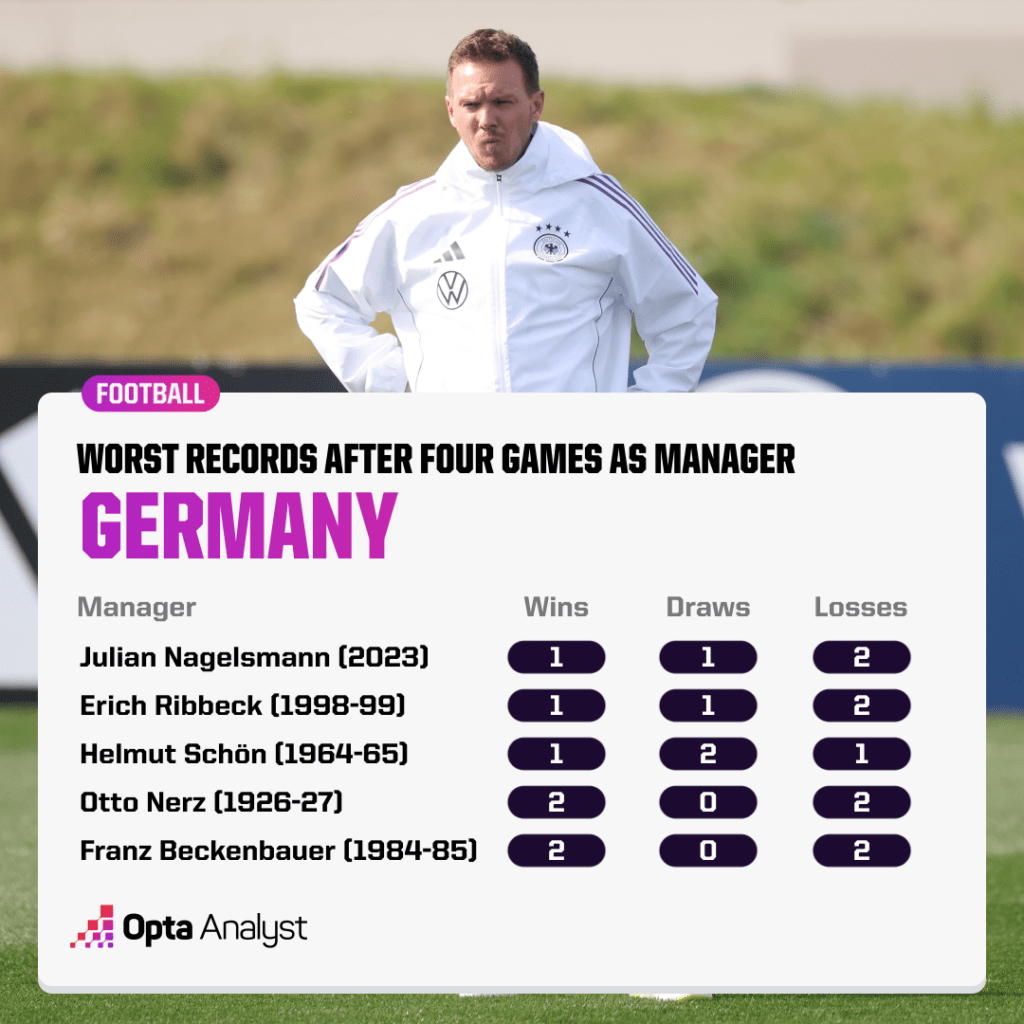
In the last two games in particular, Germany had major problems moving the ball into the attacking third and into the box. In the defeat against Turkey, they only played 45 passes into the attacking third; only doing so fewer times in a game once since the round-of-16 exit against England at Euro 2020 (29 against Spain at the 2022 World Cup).
Then, they only had 15 touches in the opposition box in the loss against Austria. The last time Germany had fewer touches in the opposition penalty area was in November 2020 in a 6-0 hammering by Spain (seven).
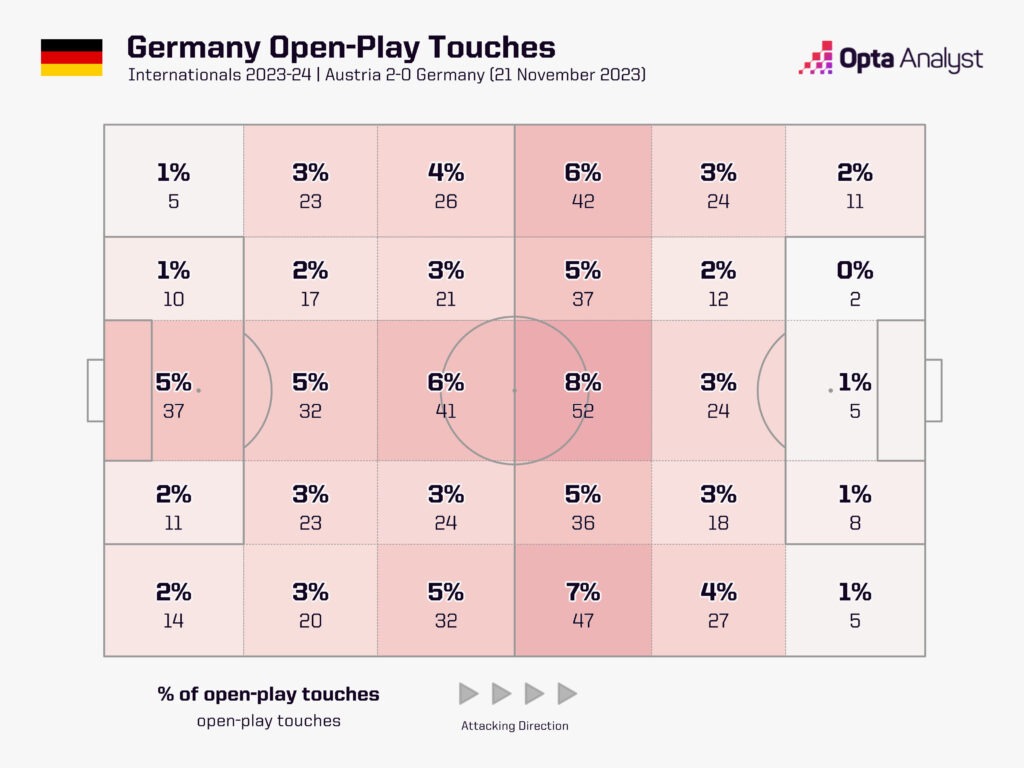
Kroos’ Impact in Previous Tournaments
Kroos’ return could enrich the German game, especially regarding one particular issue.
Since the 2010 World Cup, Kroos has played the most passes into the attacking third per 90 minutes on average of all players with at least 1,000 minutes of action at major international tournaments involving European teams. In fact, his name appears three times among the five instances of players to play the most passes into the final third in a tournament match since 2010.
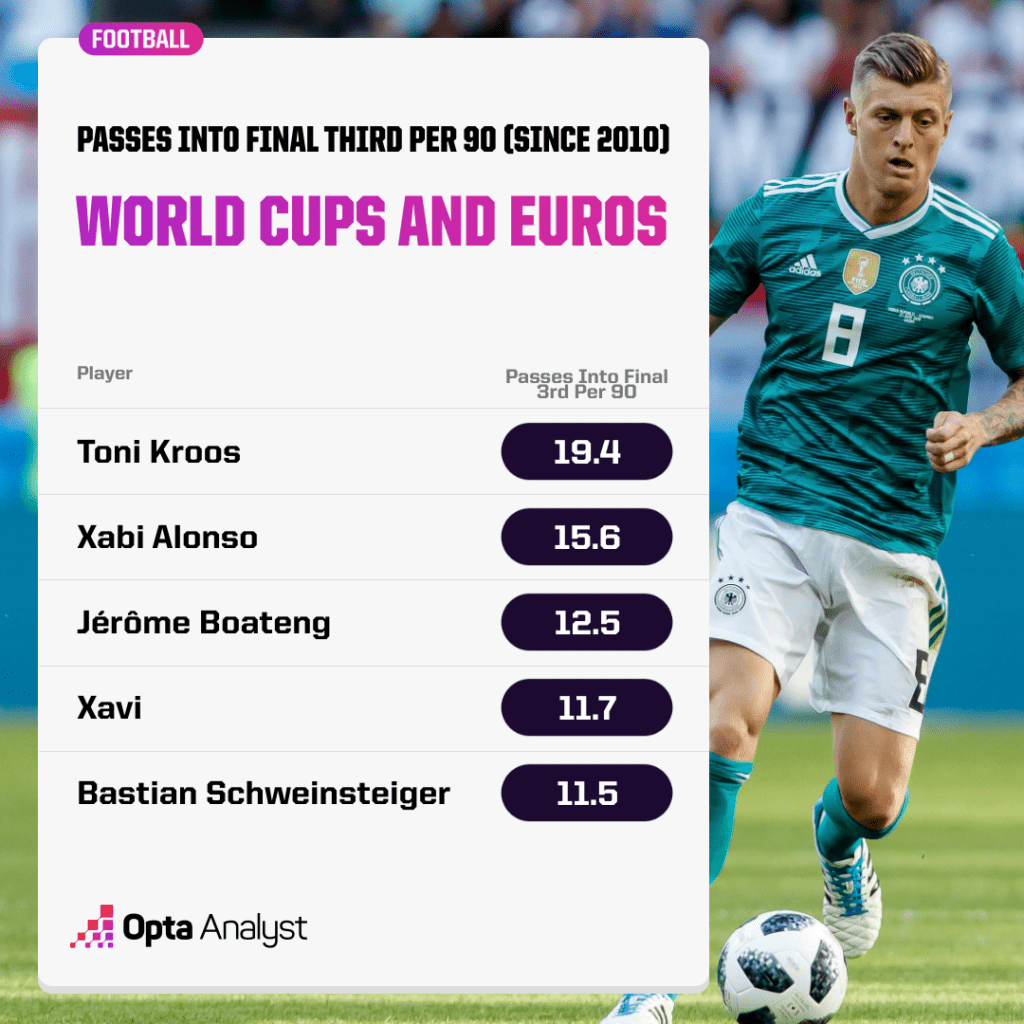
Even though Kroos was a part of the disappointments at the 2018 World Cup (eliminated in the group stage) and the last European Championship in 2021, he also made his mark for Germany from 2010 to 2016, reaching at least the semi-finals of major tournaments four times in a row during that period. Since his international debut in 2010, only Thomas Müller (126) and Manuel Neuer (115) have played more games for Germany than him (106).
The Best Kroos in Madrid?
Kroos’ comeback is not just based on nostalgia but is also justified by his performances at club level for Real Madrid this season. Both his 99 passes per 90 minutes this season and his duel success rate of 63% are personal bests during his time in Madrid, while Kroos has also impressed in the Champions League. He has broken through at least one opponent’s line with 25.6% of his passes in the competition so far this season – the best figure of any midfielder with at least 25 passes.
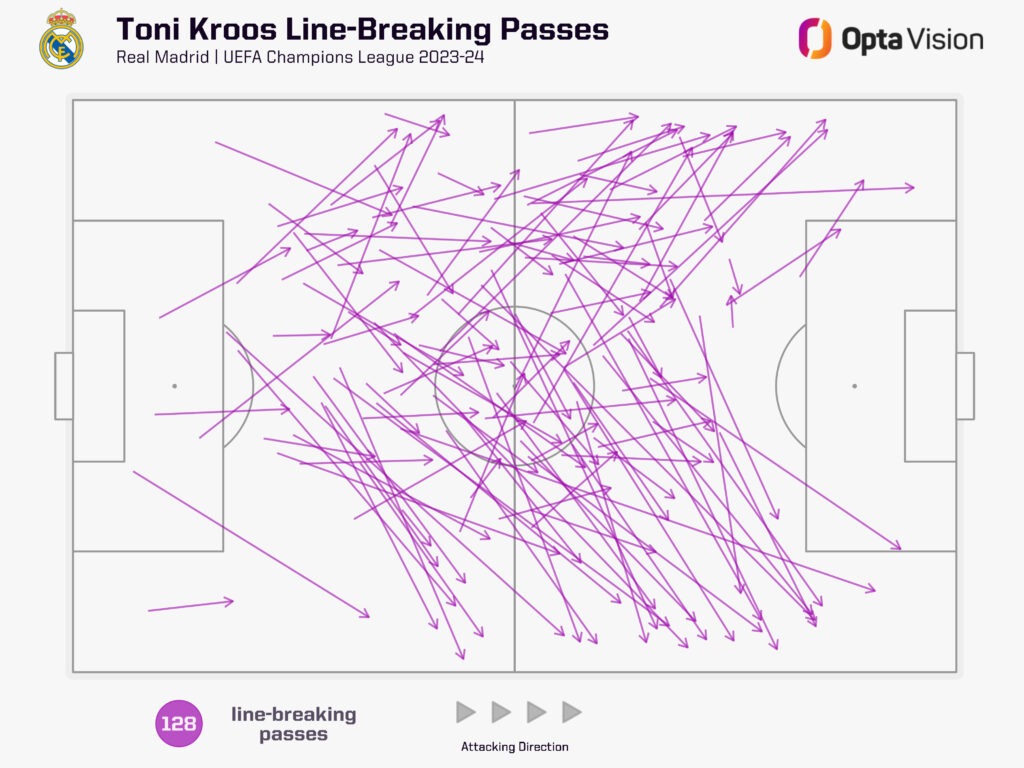
“It’s difficult for me to say which is [Kroos’] best season, because the current one is always the best. It’s enough to look at the statistics,” said Madrid manager Carlo Ancelotti at a press conference in mid-February.
As the table below shows, Kroos’ stats in all competitions this season put him ahead of some selected fellow German midfielders in most metrics.
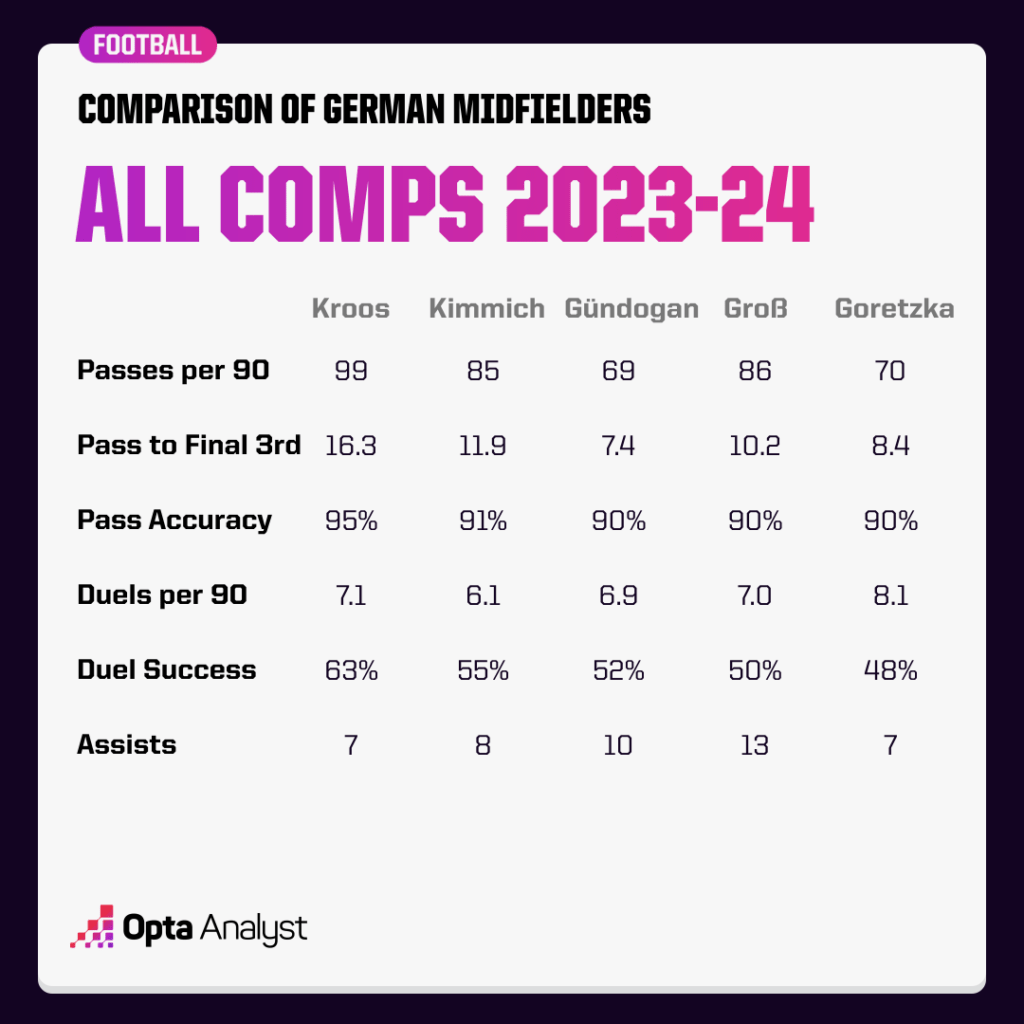
Kroos’ comeback, however, is likely to bring with it far-reaching restructuring measures and losers in Nagelsmann’s team. He will return as the central anchor in the German midfield, which will have a direct impact on the positioning of others.
The ‘New’ Germany Midfield
Nagelsmann has already announced his intentions to play Joshua Kimmich at right-back – a position he has recently returned to at Bayern Munich. Barcelona’s Ilkay Gündogan, who was only appointed as captain by Nagelsmann’s predecessor Hansi Flick last year, could move up to the number 10 position – or, together with Kroos, play in front of a deep-lying midfielder such as Brighton’s Pascal Groß or Bayer Leverkusen’s Robert Andrich. Leon Goretzka, who has 57 caps to his name and aspires to be a leading player for Germany, was not even named in Nagelsmann’s latest squad.

Kroos is well aware that he is taking a certain risk with his return, given his involvement in previous underperforming Germany sides in 2018 and 2021.
“I’ve taken enough time to really think about everything and have come to the conclusion that the chances absolutely outweigh the risks, and that the worst-case scenario won’t affect me much,” he said on his podcast.
Nevertheless, Kroos will do everything he can to ensure that Germany shine on home soil this summer, hoping they can at the very least get past the round of 16 at a major tournament for the first time since 2016.
Enjoy this? Subscribe to our football newsletter to receive exclusive weekly content. You should also follow our social accounts over on X, Instagram, TikTok and Facebook.
